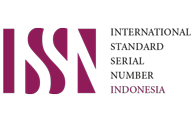A REVIEW OF SCHEMA THEORY IN STUDENTS’ READING COMPREHENSION
DOI:
https://doi.org/10.61787/f8dgb784Keywords:
Reading, Schema TheoryAbstract
This research examines the application of Schema Theory in enhancing students' reading comprehension. Schema Theory highlights the role of prior knowledge—formal, content, and linguistic schemata—in understanding texts. It emphasizes the cognitive processes through which readers connect new information with pre-existing mental structures, improving comprehension and engagement. Despite its potential, challenges such as unfamiliarity with text structures, cultural gaps, and limited vocabulary persist. The study explores instructional strategies to activate and utilize schemata effectively, including pre-reading activities (e.g., brainstorming), while-reading techniques (e.g., guided reading), and post-reading tasks (e.g., summarizing). Findings from various studies highlight the importance of tailored approaches to schema activation, such as integrating cultural context, predicting content, and refining existing schemata. This paper argues that applying Schema Theory can enhance reading instruction, address diverse learners' needs, and improve literacy outcomes.
















